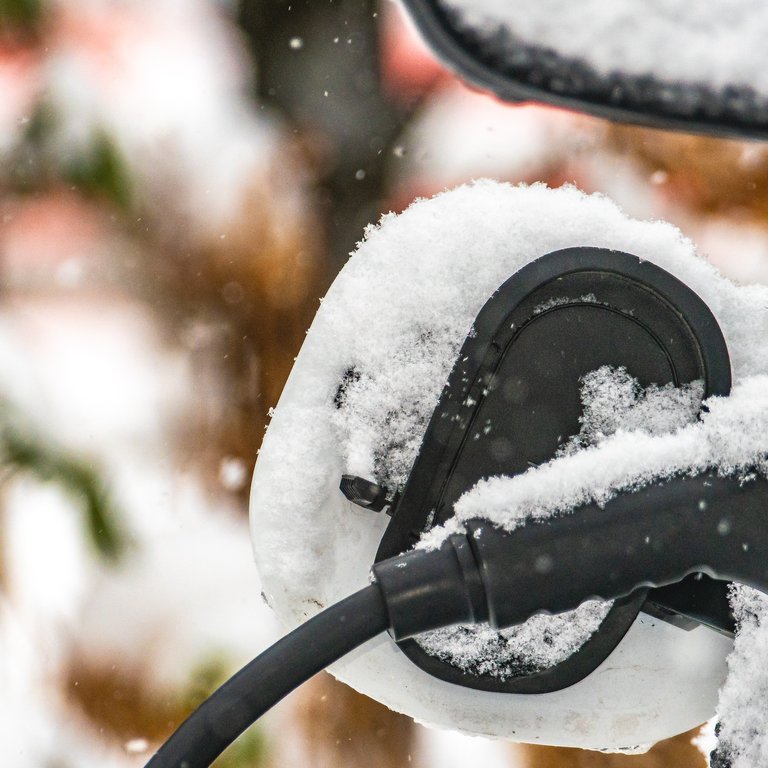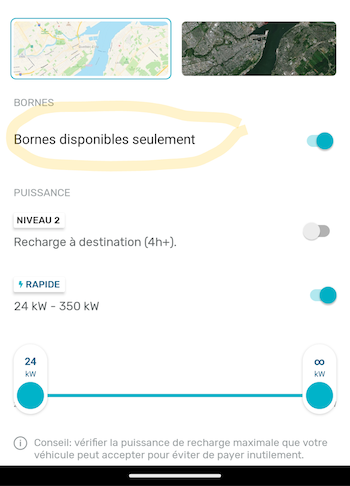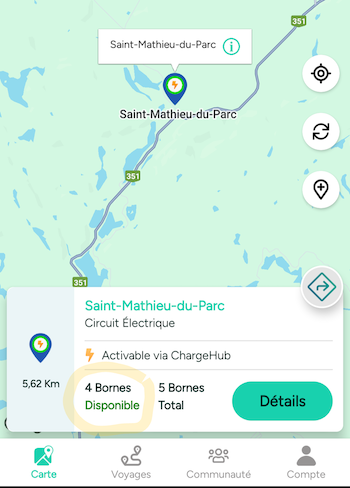
Blackouts and Electric Cars
2 January 2025
A persistent myth about electric cars is that they make us more vulnerable in the event of a power failure. But is it really the case?
In the event of a prolonged power cut, it is true that EV drivers affected by the outage cannot charge their vehicles at home. However, most power outages only last a few hours, and not all electric vehicles systematically need charging during this period. With electric vehicles having a range of over 400 km, and average daily trips of around 50 km, most electric vehicle owners only charge once every few days or even once a week, depending on their needs. The best option in the event of a power cut is to assess your range requirements in terms of remaining battery capacity and ask yourself whether you really need to charge right away. If the answer is no, you can track the progress of the outage using Hydro-Québec's Power Outages tool, which lets you see the perimeter affected and the time when service will be restored, and plug in your vehicle when electricity returns.
If the answer is yes and the need to charge is immediate, there are several possible options. Power outages rarely affect an entire city or sector. Québec's fast-charging network is very extensive. For most people, there's always a fast-charging station available not far from home. If necessary, you can use the Electric Circuit app, or any other app, to check which charging stations are operational in real time.


Turning to friends or family who have a charging station and still have electricity to charge at their home is also a good option.
For those who still have doubts, it is worth pointing out that when power cuts occur, even service stations can be affected by the lack of electricity. It is not uncommon not to be able to refuel during a blackout, since gas stations need electricity to keep their pumps running.
Electric cars soon to be a “source” of energy
An increasing number of new electric vehicle models arriving on the market are equipped with 120V and 240V power outlets of decent power. This technology, known as V2L (vehicle to load), turns the vehicle into an electric generator. Professional vehicles such as electric vans can easily power work tools. In personal vehicles, you can plug in household or entertainment appliances, and even a small fridge or an Internet modem in the event of a power failure.
Vehicles with V2L technology (as of November 2024)
|
Model |
V2L Capacity |
|---|---|
|
Chevrolet Silverado EV |
6 x 120V and 240V outlets for 7.2kW. |
|
Ford F150 Lightning |
Optional: 11 x 120V and 240V outlets for 9.6kW. |
|
Genesis GV60 |
120V outlet, 16A, inside the vehicle. Also compatible with 16A (110V-240V) V2L adapter for the charging outlet. |
|
Genesis GV70 Electrified |
Compatible with 16A V2L adapter (110V-240V) for the charging outlet. |
|
Genesis G80 Electrified |
Compatible with 16A V2L adapter (110V-240V) for the charging outlet. |
|
GMC Sierra EV |
Optional: 10 x 120V and 240V outlets for 10.2kW. |
|
Hyundai IONIQ 5 |
120V outlet, 16A, inside the vehicle. Also compatible with 16A (110V-240V) V2L adapter for the charging outlet. |
|
Hyundai IONIQ 6 |
120V outlet, 16A, inside the vehicle. Also compatible with 16A (110V-240V) V2L adapter for the charging outlet. |
|
Kia EV6 |
Optional: 2 x 120V-240V outlets for 3.7kW. Also compatible with 16A (110V-240V) V2L adapter for the charging outlet. |
|
Kia EV9 |
Optional: 2 x 120V-240V outlets for 3.7kW. Also compatible with 16A (110V-240V) V2L adapter for the charging outlet. |
|
Kia Niro EV |
120V outlet, 16A, inside the vehicle. Also compatible with 16A (110V-240V) V2L adapter for the charging outlet. |
|
Rivian R1S and R1T |
2 x 120V outlets for 11kW. |
|
Tesla Cybertruck |
4 x 120V outlets (20A) and 1 x 240V outlet (40A) for 11.5kW. Possibility of charging another vehicle. |
This way of using your electric vehicle as a generator is also possible with other electric vehicles than those presented in this list. All you need is a suitable inverter connected to the vehicle's 12V battery. This type of device can easily be found in some supermarkets or on the Internet. The electric vehicle then becomes an asset for reducing the inconvenience of a power cut, while avoiding the pollution generated by conventional generators.
Very soon, electric vehicles will be able to supply electricity to the home when needed. This is V2H (vehicle to home) technology. Connected to a bi-directional charging station, the vehicle becomes a powerful green generator for the home. This technology is already available for certain models, such as the F-150 Lightning and the Chevrolet Silverado EV. Other brands such as Hyundai, Kia, Rivian, Tesla and Volkswagen promise to introduce this technology in the years to come.
In its ultimate version, the electric vehicle should become an energy storage for the entire power grid. Thanks to bi-directional charging, which would send electrical energy back to the public grid, the electric vehicle could help stabilize electricity demand and integrate more intermittent renewable energies (wind and solar) into the energy mix. This is what we call V2G (vehicle to grid).
This future looks promising, and the various technologies used in electric vehicles should help us to counter the growing number of power failures caused by climate change.
